All about the types of threads and their choice
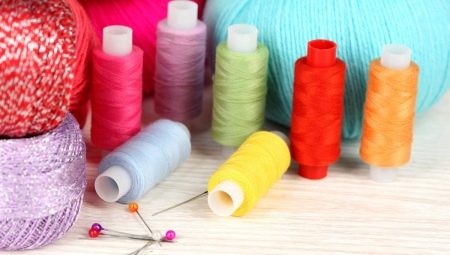
The textile industry does not stand still, and now needlewomen use a huge number of threads to create their masterpieces. But for a person ignorant of such matters, it is difficult to determine which threads need to be taken into work. Let's talk about the types of fittings, their purpose and the main manufacturers.
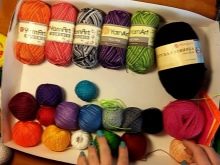

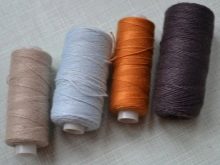
What are they made of?
Threads can be understood as twisted products that are made from fibers of synthetic or natural origin, they are used to perform operations in needlework and garment production. Threads connect knitwear and textiles.
Modern threads are made from combed yarns, spliced and twisted several times. After that, the finished cords are bleached and dyed.
Ordinary fittings consist of chemical and natural fibers, and sometimes of their combination.
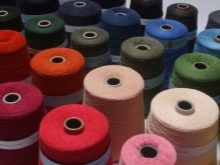
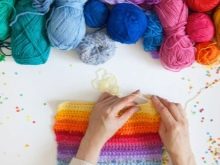
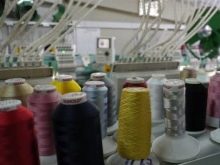
Let's consider some types and their properties in more detail.
- Cotton threads are 100% natural fibers (including linen) according to GOST. They are distinguished by their durability, environmental friendliness, and the absence of an allergic reaction to the main components.
- Made from 100% polyester nylon threads. Their main characteristics are versatility, do not create pile, are uniform along the entire length, strong, and when used, they give out a perfect stitch.
- Staple or polyester yarns. Due to the fact that they are superelastic, knitwear craftswomen work with them.
- Reinforced fittings are made from lavsan base using siblon or cotton.
- Polyamide or nylon, polyester are considered moisture and heat resistant, fire resistant. Therefore, bobbins with similar threads are used for sewing workwear.
- Silk thread is used to perform the finest work in handicraft.
- The stretch or textured variety is used when processing knitwear.
- This elastic thread is made from spandex with a polyester weave.
- Machine embroidery threads are produced in two types of spools: upper - polyester, cotton, viscose, lower - from filament polyester.

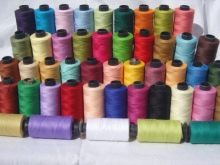
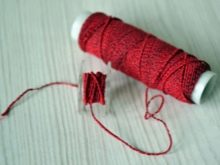
Separately, it is worth noting metallized threads made from metal blanks. As a rule, they are used in embroidery. A special group can be divided into holographic, with a shrinkage effect, with special protection, water-soluble threads.
They are not used very often - only for the manufacture of certain specific goods.
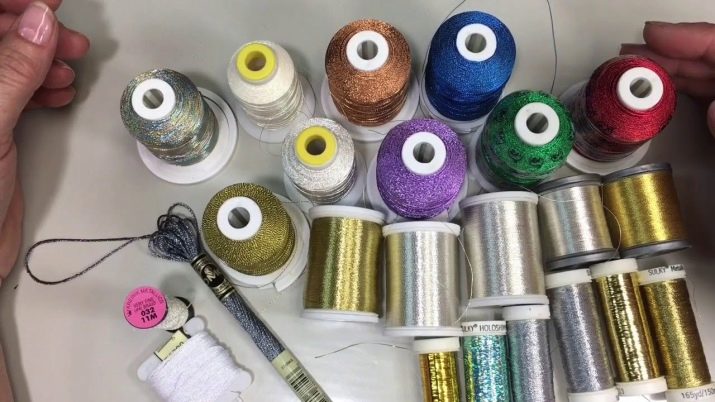
Natural
Natural threads are obtained from silk, linen, cotton, bamboo, wool. There are also a huge number of wool varieties, which are mainly made from llama wool. Their main positive characteristics are strength and lightness. Pure material is not affordable for everyone, so it is mixed with other fibers.
No less popular are the threads from angora - a downy rabbit. It is also fluffy and durable, but the fluff does not adhere well to the yarn, so it is most often used in combination with other fibers. Natural wool threads are obtained from cashmere and merino. But, as a rule, they are combined with other raw materials.
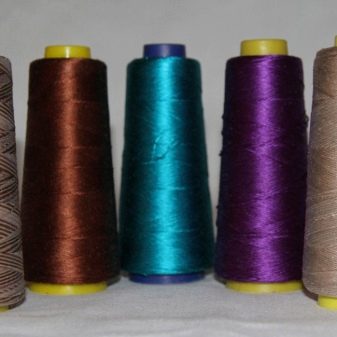
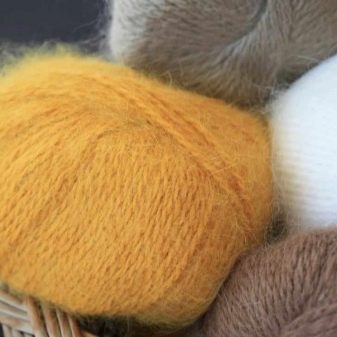
Chemical
For a long time, threads made of polyester, as well as polyamide and polypropylene, have occupied their special niche. They are distinguished by good curl, special strength, excellent texture.
In production, they are often used for the reason that they are combined with any fabrics, they are used in work with an overlock. They are distinguished by their high quality stitching.
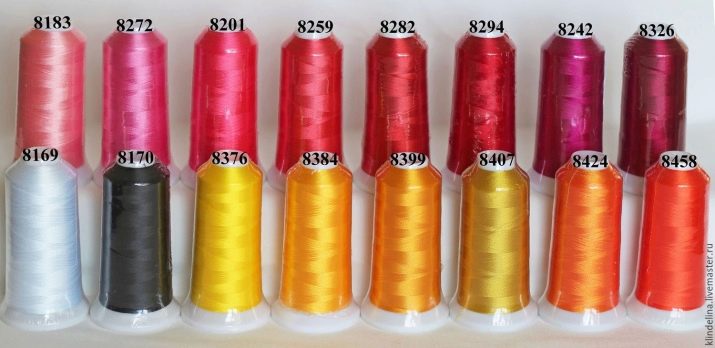
Combined
Combined fibers are often used, because they combine the qualities of chemical and natural threads. Their diameter is different, they are used for all types of work in combination with any fabrics. This is the most popular hardware category.
The main combinations are cotton with polyester, reinforced yarn, acetate with polyamide and viscose.
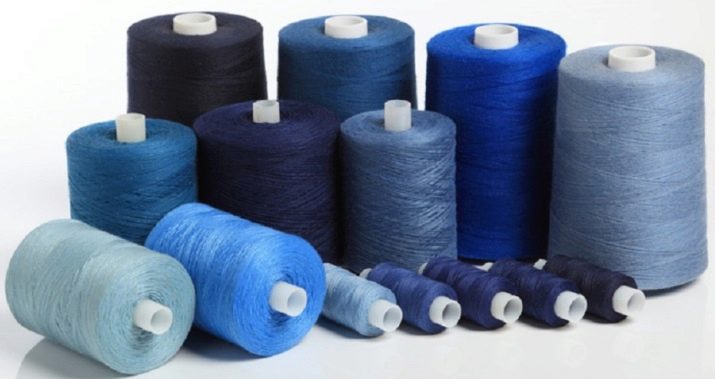
Views
Threads are used to make various products. First of all, they are selected based on what kind of fabric needs to be processed.
Let's give an approximate classification.
- Cotton-based threads are used to create children's clothing, decorative embroidery, patchwork.
- Polyester and nylon have a wide range of applications - they are purchased to work with various types of fabrics: synthetics, cotton, wool.
- The polyester base is used for swimwear, workwear, underwear.
- Overlock threads are sold in large bobbins. This is due to the fact that it is easier to use elastic, thin types for winding on an overlock.
- Nylon and polyamide varieties are used when sewing special heavy-duty products.
- Polyamide monofilament is available in white and multi-colored. It is widely used for embroidery with beads, making bracelets, balls. This thread is hardly noticeable, there are no problems with loops.
- Silk fibers are used to create lace.
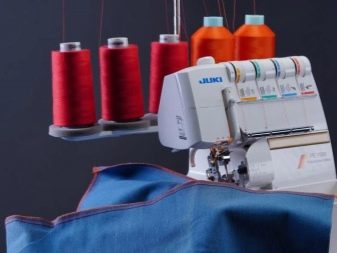

Sewing
The main purpose of the threads is to sew clothes and various products, therefore there is a separate category of accessories - sewing. It is produced from both synthetic and natural bases.
The thickness always varies: it all depends on what kind of product you want to sew. For the manufacture of exclusive household items, small coils are often used, and in industrial production - an impressive size of the bobbin.
The main characteristics of such fittings:
- highest strength;
- resistance to adverse factors;
- heat resistance;
- evenness;
- lack of molting;
- perfect curl.
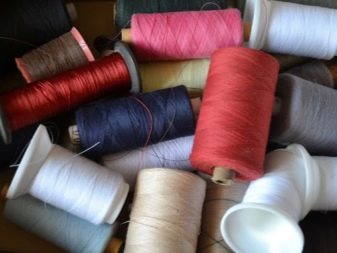
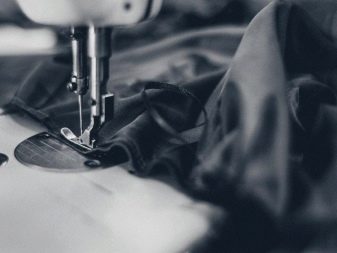
Knitting
Such varieties are used for machine and hand knitting. Distinctive characteristics - length, composition, thickness. It can be based on synthetic, blended and woolen fibers. But, perhaps, the most successful are mixed threads.
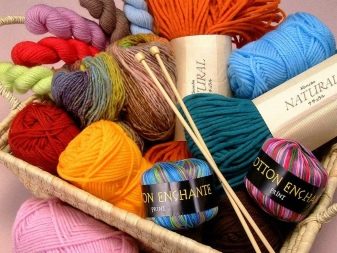
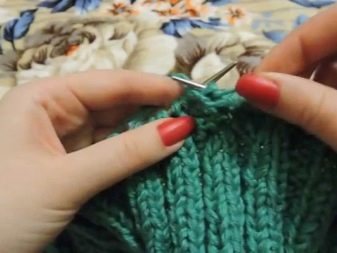
Embroidery
Used to decorate the material with an ornament. The main difference is related to how the embroidery is carried out: by machine or by hand. Basically, needlewomen use floss in skeins of 20 and 10 meters in their work, collected in several threads.
The main requirement is smoothness, looseness, no tendency to curl.
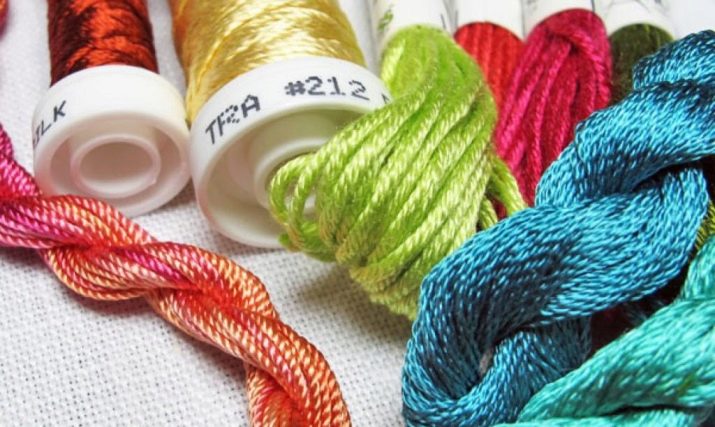
For weaving
Basically, for weaving, synthetic threads are used, which do not get tangled, do not twist, do not shrink and do not fade.
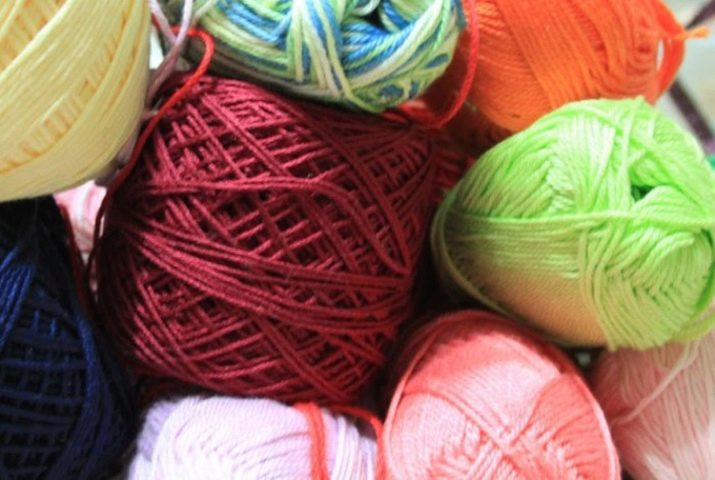
Design
The assortment of modern fittings is quite rich and varied. It all depends on what kind of product needs to be processed and what is its further purpose.
- For sewing and embroidery, the entire color palette is used: from white to red, black and blue tones.
- For sewing outerwear or streetwear, backpacks, caps, children's products, threads with a reflective effect are used - they are visible in the dark.
- If you need to sew on beads, bugles or beads, it is better to take transparent or colorless varieties.
- The most beautiful and chic embroidery is obtained using gold or colored threads. As a rule, in such work they want to emphasize the pomp or formality of a product or event.
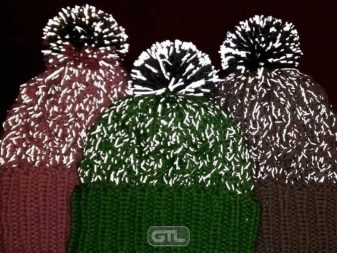
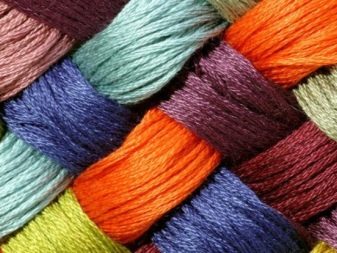
If you suddenly have a question, what color accessories to use for your product, then you need to proceed as follows. It is necessary to attach a piece of fabric to the spool of threads, which is planned to be used in work. If there is no 100% match, then it is better to use threads one shade darker. Such threads will stand out less than light-colored counterparts.
How to choose?
Of course, an experienced seamstress knows how to choose accessories for a future product. But beginners have some difficulties. Let's consider the main nuances of the choice.
- For sewing on the machine, choose threads that are the same thickness and composition.
- The hardware has its own shelf life: it can simply tear, crumble, shrink or shed.
- Sometimes experienced craftswomen have difficulty in choosing a product by number. Just take several types of different markings - and then you will not go wrong. Better yet, take it immediately as a set, and at a favorable price.
- For threads, there is its own labeling table: LH - cotton braid, LS - silicone braid, LL - polyester and lavsan braided. The best option is the abbreviation LL.
- Consider the size of the needle and the thickness of the threads. Fine threads are suitable for a 70–75 needle, the standard thread is good for 80–90 needles, and thick threads are suitable for a 100–120 needle.
Keep in mind that if you sew a product one-time, then you need a reel, and for mass production you will need a reel from 100 to 1000 meters.
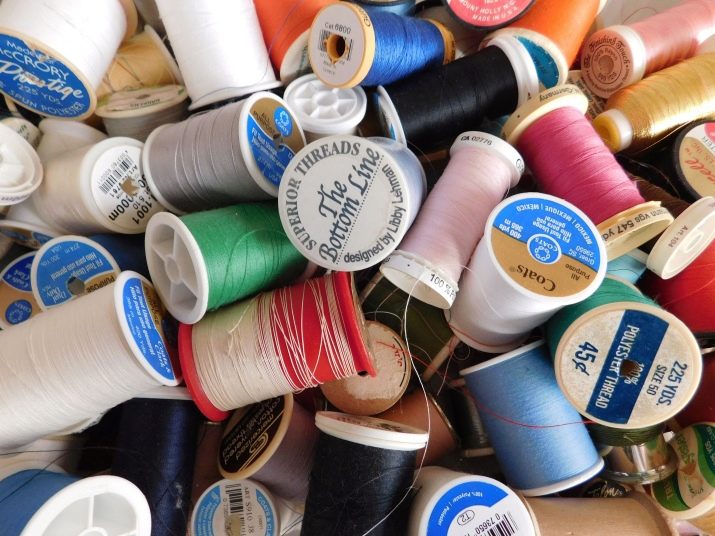
We suggest using some tips when buying accessories:
- for sewing clothes, linen and machine embroidery, polyester 22L, 30K, cotton 50, reinforced thread 36ЛХ, 35ЛЛ are used;
- for thin leather, sports jersey and durable seams, take cotton 40, polyester 33L, reinforced thread 45ЛЛ or 44ЛХ;
- products from jeans, sewing covers - use staple polyester 30, polyester 50K, cotton 30 and 20, reinforced fiber 65ЛХ and 70ЛЛ;
- cotton 10, polyester 86L and 9K, reinforced fiber 100LL and 100HL are definitely suitable for footwear and leather goods.

Manufacturers
There are many manufacturers, but few strong thread manufacturers. We present the rating of the best firms in Russia:
- NPK named after Kirov;
- "Euronite";
- Kurskkhimvolokno;
- Votex;
- "Pavlovo-Posad Worshiper";
- Rakhmanov Silk Factory.
Among foreign brands it is worth noting such brands: Anchor - England, DMC - France, Madeira - Germany, Butterfly, New Star, Winter Bind.
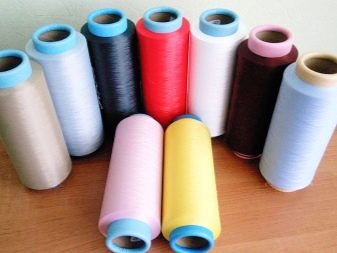
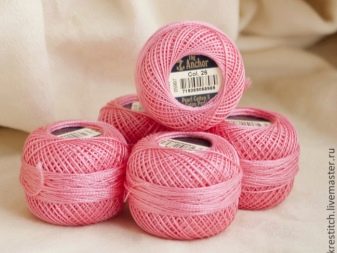
For needlewomen and manufacturers of products, it is now a paradise in terms of the range of threads. But it is necessary to competently and wisely approach the issue of choosing products. Otherwise, the finished product may be severely damaged.








